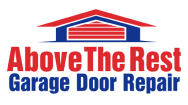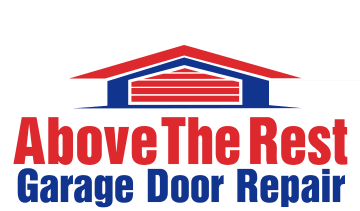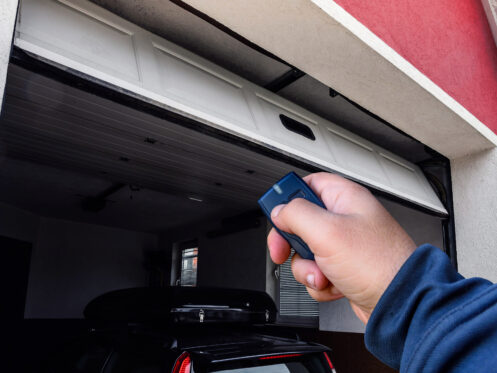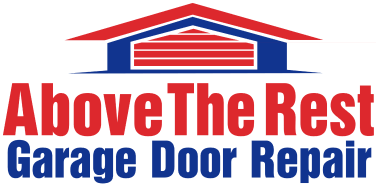Your garage door is a vital part of your house. You need it to open and close seamlessly and conveniently whenever you want to go somewhere and after returning from running your errands. If it is failing in any way, these are the top reasons why.
1. Misaligned Photo Eye Sensors
Garage photo eye sensors are safety devices fixed on either side of the garage door approximately 6 inches off the ground to prevent it from colliding with anything that comes into its path while closing. They emit an invisible infrared beam across the garage door that, if interrupted, will cause the garage door to automatically reverse.
Garage door photo eye sensors are quite delicate. Accidental bumps, weather conditions, and dirt and debris can knock them out of alignment. This will disrupt the infrared beam’s pathway, preventing the door from closing completely, or it will only partially lower.
To fix this issue, it’s best to call a professional. They will loosen the screws holding the sensor’s bracket in place and adjust it back to its proper alignment.
2. Dirty Photo Eye
If your photo eyes are well-aligned but your garage door still won’t open or close, something could be blocking the infrared beam from traveling freely between the sensors. Dust, dirt, spider webs, snow, and other debris can gather on the sensor’s lens and prevent the garage door from working.
Use a soft, lint-free cloth and a mild cleaner to clean the photo eye sensors. Do not get the eye too wet because this can cause more dust to stick. Avoid using water or harsh cleaning agents as these can damage the sensors.
3. Sensor Signal Interference
If the garage door sensors sit in direct sunlight for most of the day, UV rays can disrupt the infrared signals, and the heat may destroy their internal components. To mitigate this, you’ll need to hire a garage door expert to relocate the sensors to a shaded area, or you can install sun shields over the garage door.
4. Malfunctioning Garage Door Remote
A depleted battery is the main culprit behind a defective garage door remote. If your garage door opens with the hardwired wall switch but the remote control or keypad won’t function, you likely need to replace the batteries.
If the battery is fine, check to see if other devices, such as Wi-Fi routers or baby monitors, are near the garage door sensor. They are known to interfere with the remote’s signals. Either move these devices away or change the frequency of your garage door remote.
Sometimes, you might also need to reset your garage door settings. This is important, especially when it works intermittently or if your garage doesn’t respond to it at all. Check your garage door instruction manual to see how to reset your remote (each garage door open has a slightly different reprogramming method), or consult a professional to help you.
Additionally, your garage door may not be responding to the remote because the wall control lock feature is on. The door lock disables all remotes. Disengage it by turning the handle or knob in the opposite direction.
5. Garage Door Rollers May Need Lubrication
Garage door rollers ensure smooth and silent movement of the door along its tracks. Without adequate lubrication, rollers can stiffen or fail to turn, potentially stopping the door from opening or closing properly. Cold winter temperatures can exacerbate the issue by hardening lubrication, further restricting roller movement.
Professional technicians address this issue by first inspecting the rollers and tracks for dirt, debris, or wear that could affect performance. They use specialized cleaning tools to remove any buildup and ensure the tracks are clear. Next, they apply a high-quality lithium-based grease or a lubricant specifically designed for garage doors, targeting hinges, rollers, and ball bearings to restore smooth operation.
Excess grease is carefully wiped away to prevent friction and avoid attracting dust or moisture, which can lead to long-term damage or corrosion. Regular professional maintenance not only keeps the rollers in peak condition but also extends the overall life of the garage door system.
6. Electric Issues
The garage door relies on electricity to function. Therefore, if its source of power is interrupted, it won’t open or close. Look for a tripped circuit breaker, faulty fuse, damaged circuit board, or loose or damaged wiring. You may need a qualified electrician to fix any serious electrical issues.
7. Incorrect Door Limit Settings
If your garage door reopens immediately after coming into contact with the ground or doesn’t close or open completely, you may have an incorrectly programmed limit switch. Limit switches are settings that control how the garage door motor lifts or lowers the door. Incorrect programming may result in the door pulling up or reversing as soon as you command it to close or open.
A professional technician will assess the limit switch settings to diagnose the issue. For a door that closes and immediately reopens, they may adjust the down-limit switch to ensure the motor stops at the correct point. If the door isn’t opening fully, they will measure the gap and adjust the up-limit switch accordingly to allow the door to rise completely.
Technicians rely on precise calibration to resolve these issues, testing the door after each adjustment to ensure smooth and accurate operation. Properly configured limit settings are essential for both the safety and functionality of the garage door system. Regular professional maintenance can help prevent these issues and keep your door operating reliably.
8. Speed Issues
Residential garage doors are not designed to open or close too fast. They should move at a speed of 7 inches per second. If yours is faster than this, you might have broken or loose cables, loose springs, or incorrect sensitivity settings. All these issues need professional repairs. They may have to replace the cables or springs and readjust the garage door settings.
9. Misaligned Door Tracks
Your garage door could also be failing because its tracks are bent or misaligned. This is a common occurrence with old garage doors (20 years or older) due to wear and tear. Also, bumping into the door with a car, improper installation, neglect, and harsh weather elements can contribute to track misalignment.
To troubleshoot this issue, call a professional to assess the door and fix the misalignment. They may need to replace the garage door spring, repair the track and rollers, fix the door itself, or completely install a new garage door.
Consult Above the Rest Garage Door Repair for Professional Guidance
It’s safer and better to leave garage door problems to a professional. Troubleshooting the garage door yourself could lead to further damage and injury. If you live in Colorado Springs, CO, call Above the Rest Garage Door Repair for all your garage door repairs and maintenance. Our team has been the trusted garage door contractor for homeowners and businesses in the Colorado Springs and Monument area since 1990. You can also reach out to us for other services, such as garage door installation, insulation, and reinforcement.





